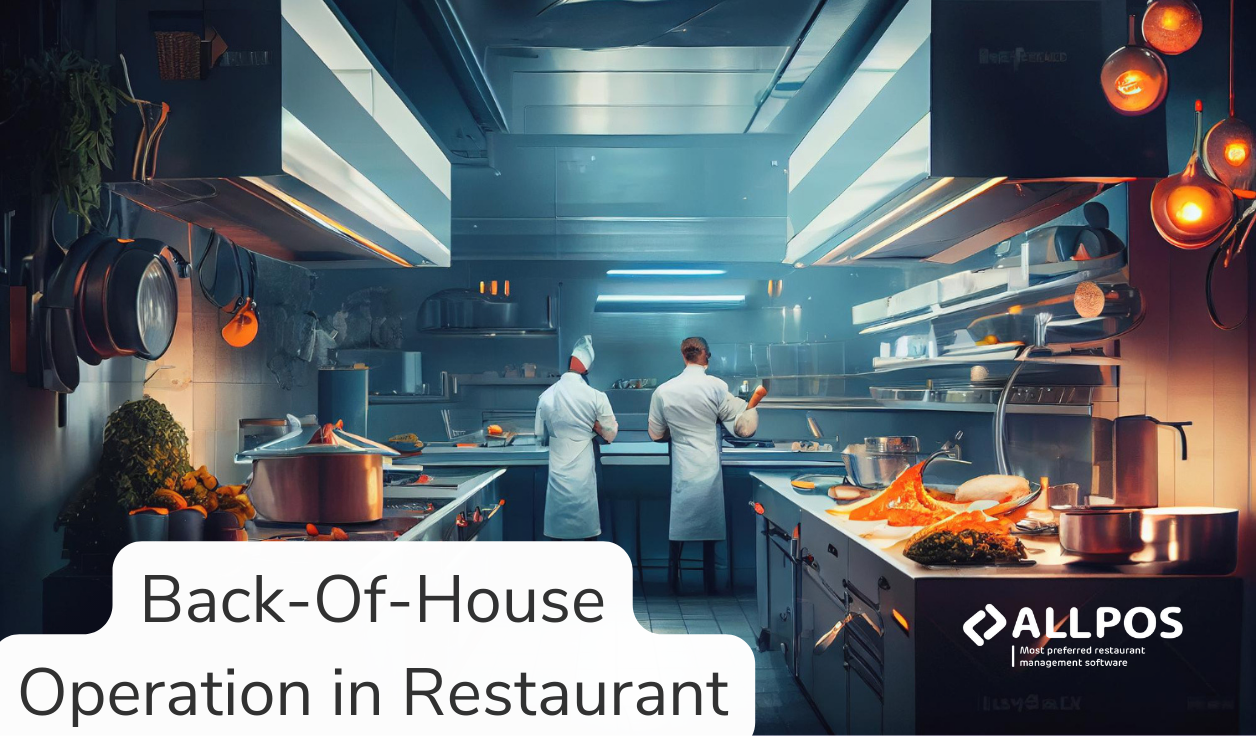Back-of-House Operation in Restaurants: A Complete Guide (2023)

When you walk into a restaurant and experience a seamless dining experience, it's easy to overlook the intricate behind-the-scenes operations that make it all possible. The back-of-house (BOH) operations are the heart and soul of any successful restaurant, ensuring that the kitchen runs smoothly, food is prepared to perfection, and the entire dining experience is orchestrated flawlessly. In this comprehensive guide, we'll delve into the various aspects of back-of-house operations in restaurants, providing you with insights into how they work and why they are crucial for a restaurant's success.
What is Back-of-House (BOH) Operations in a Restaurant?
The back-of-house operations in a restaurant refer to all the activities and processes that occur behind the scenes, primarily in the kitchen and other areas hidden from the customers' view. It encompasses everything from food preparation and cooking to cleaning, inventory management, and maintaining overall kitchen functionality. The BOH team is responsible for ensuring the smooth and efficient production of high-quality dishes that meet the restaurant's standards and delight customers.
Importance of Back-of-House Operations
Quality Assurance
BOH operations directly impact the quality of the food served. The meticulous attention to detail, proper cooking techniques, and adherence to recipes ensure that every dish meets the restaurant's standard of taste and presentation.
Food Safety
Maintaining strict food safety protocols is paramount in BOH operations. Proper handling, storage, and cooking of ingredients prevent foodborne illnesses and ensure the health and safety of customers.
Efficiency
A well-organized BOH operation enhances overall efficiency in the kitchen. Proper workflow, optimized station layout, and clear communication between kitchen staff result in faster preparation times and quicker service.
Customer Satisfaction
The BOH team's commitment to excellence directly influences customer satisfaction. Delicious food served in a timely manner contributes to a positive dining experience (Front-of-House), encouraging patrons to return and recommend the restaurant to others.
Cost Control
Effective BOH operations help manage costs by minimizing food wastage, tracking inventory accurately, and controlling portion sizes. This contributes to the restaurant's profitability.
Team Coordination
BOH staff must work in harmony to maintain the rhythm of the kitchen. Teamwork, clear communication, and a shared sense of purpose are vital for achieving smooth operations.
Ways to Improve Back-of-House Operations
Streamlined Workflows:
Evaluate the kitchen layout and workflow regularly. Optimize the arrangement of stations, utensils, and equipment to minimize unnecessary movement and improve efficiency.
Training and Development:
Invest in comprehensive training programs for BOH staff. Provide continuous learning opportunities to enhance culinary skills, food safety knowledge, and teamwork.
Technology Integration:
Embrace technology solutions like point-of-sale (POS) systems, kitchen display systems (KDS), and inventory management software. These tools streamline order processing, communication, and inventory tracking.
Standardized Recipes:
Develop standardized recipes that outline precise measurements, cooking times, and plating instructions. This ensures consistent quality and reduces the likelihood of errors.
Cross-Training:
Cross-train BOH staff in different roles and stations. This enhances flexibility, reduces dependency on specific individuals, and ensures smooth operations during peak times or staff shortages.
Communication Channels:
Establish clear communication channels between the BOH and FOH teams. Effective communication prevents misunderstandings, reduces errors in orders, and contributes to a seamless dining experience.
Feedback Loop:
Encourage an open feedback loop within the BOH team. Regular discussions about challenges, successes, and improvement opportunities foster a culture of continuous improvement.
Quality Checks:
Implement routine quality checks to ensure that dishes meet the desired standards. This includes taste testing, presentation assessment, and portion control.
Sustainable Practices:
Embrace sustainable practices in food sourcing, waste management, and energy consumption. This not only aligns with environmentally conscious trends but also contributes to cost savings.
Restaurant Management Software
In today's restaurant landscape, advanced restaurant management software is integral for efficient back-of-house operations. These tools automate tasks like inventory tracking, order processing, and staff scheduling, enhancing overall efficiency. Integration of technology such as point-of-sale systems, kitchen displays, and inventory software empowers managers to make data-driven decisions and swiftly address operational challenges.
Conclusion
In conclusion, the back-of-house operations of a restaurant are the hidden gears that drive its success. From ensuring food quality and safety to managing costs and enhancing customer satisfaction, the BOH team's contributions are immeasurable. By implementing strategies to improve workflows, investing in staff training, embracing technology, and fostering a culture of continuous improvement, restaurants can elevate their back-of-house operations to new heights. The seamless synergy between the back-of-house and front-of-house teams, combined with the adoption of technology, sets the stage for a thriving restaurant that consistently delivers exceptional dining experiences in 2023 and beyond.